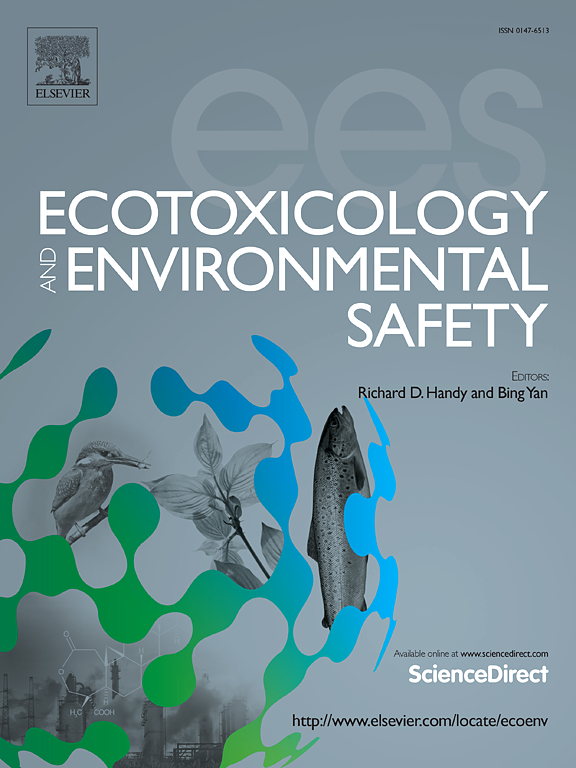Pubertal low dose exposure to benzophenone-3 (BP-3) alters murine mammary stem cell functions
IF 6.2
2区 环境科学与生态学
Q1 ENVIRONMENTAL SCIENCES
引用次数: 0
Abstract
Benzophenone-3 (BP-3) is an organic UV filter that is widely used in personal care products and has been indicated to have negative impacts on the environment and human health. The mammary glands of humans and rodents have been confirmed to be target organs affected by BP-3 exposure. However, limited information is available on the underlying mechanism currently. In this study, we hypothesized that low-concentration BP3 exposure during puberty might lead to a susceptibility to tumors through the mediation of mammary stem cells. Our findings revealed that BP-3 exposure at 50 mg/kg/day for 5 weeks during puberty led to reproductive outcomes such as reduced body weight, decreased serum estradiol and progesterone levels, and increased terminal end bud (TEB) numbers and areas. These effects were accompanied by a decreased fraction of basal mammary stem cells and decreased self-renewal and differentiation abilities of basal mammary stem cells in vitro and in vivo such as decreased sphere formation ability, a smaller 3D structure, increased branching points and hyperplastic lesions in regenerated mammary glands. Notably, for the regenerated mammary glands formed by the basal mammary stem cells of BP-3-treated mice, a decrease in the fraction of basal mammary stem cells and decreased expression levels of the milk protein β-casein and STAT5 were observed. Taken together, our data suggest that pubertal BP-3 exposure decreases the function of basal mammary stem cells such that they induce the abnormal development of mammary glands.
求助全文
约1分钟内获得全文
求助全文
来源期刊
CiteScore
12.10
自引率
5.90%
发文量
1234
审稿时长
88 days
期刊介绍:
Ecotoxicology and Environmental Safety is a multi-disciplinary journal that focuses on understanding the exposure and effects of environmental contamination on organisms including human health. The scope of the journal covers three main themes. The topics within these themes, indicated below, include (but are not limited to) the following: Ecotoxicology、Environmental Chemistry、Environmental Safety etc.

 求助内容:
求助内容: 应助结果提醒方式:
应助结果提醒方式:


